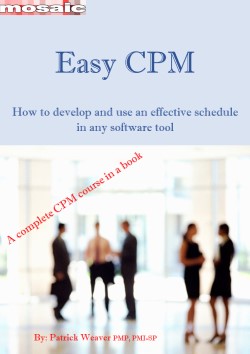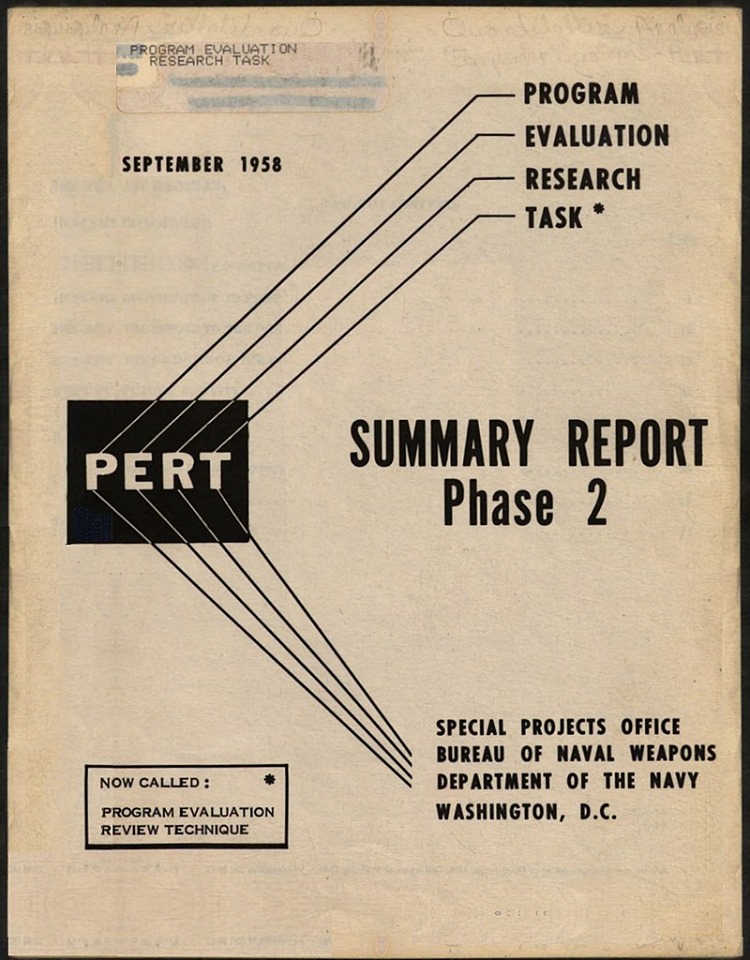Location:
PMKI > Project
Management History > Origins of CPM, PDM and
PERT Schedules.


- Origins of CPM (Critical Path
Method and AoA)
- Origins of PDM (Precedence
Diagramming Method
and AoN)
- Origins and limitations of PERT
Other related sections of the PMKI:
- The history of project
controls
- The history of project
management
 Critical
Path Analysis (CPA) has its origins in 1956/57 when Kelly
and Walker started developing the algorithms that became
the ‘Activity-on-Arrow’ or ADM approach to CPM. The
objective of Kelly and Walker's research and development
was to optimize the resources and time needed to complete
a maintenance shutdown of for each of DuPont's chemical
works in the least practical time and for the overall
lowest cost. For more details see: A Brief History of Scheduling
in the History
of Scheduling section of the PMKI.
Critical
Path Analysis (CPA) has its origins in 1956/57 when Kelly
and Walker started developing the algorithms that became
the ‘Activity-on-Arrow’ or ADM approach to CPM. The
objective of Kelly and Walker's research and development
was to optimize the resources and time needed to complete
a maintenance shutdown of for each of DuPont's chemical
works in the least practical time and for the overall
lowest cost. For more details see: A Brief History of Scheduling
in the History
of Scheduling section of the PMKI.
DP: Critical-Path Planning and Scheduling. James E. Kelly Jr., Morgan R. Walker, Proceedings of the Eastern Joint Computer Conference (USA), 1959. This paper defines the original concepts and calculations used in CPM scheduling. Both CPM and PERT used ADM (Activity-on-Arrow) networks and were developed as mainframe computer applications.
DP: The Origins of CPM, A Personal History. An in-depth interview in the first person, Kelley J.E. Jr and Walker M.R. pmNetwork Vol III, No. 2, Feb 1989. PMI, USA.
Art: The origins of PERT and CPM. Research into the origins of the mathematics and drawing styles used in PERT and critical path schedules.
Art:
The Origins of Hammocks and Ladders. Hammock
and Ladders are activity types that were developed in the
period 1961 to 1965. This paper outlines the development
of these useful scheduling assets an differentiates
Hammocks from LOE and Summary activities
See also: ICL 1900 PERT Manual from circa 1968.
Click through to our page on critical path scheduling.
The Precedence (PDM) methodology was published by Dr. John Fondahl in 1961 as a ‘non-computer’ alternative to CPM. The network notation was derived from business flow charts developed and publicized by Frank and Lillian Gilbreth [see more on the development of Flow Charts]. Notwithstanding the ‘non-computer’ emphasis in Dr Fondahl’s research, his ‘friends’ in the Texan firm, H.B. Zachry Co. of San Antonio started work in 1962 to implement the system as an IBM Mainframe computer tool. In early 1964 IBM announced the launch of their ‘Project Control System’ for the 1440 computer using the name ‘precedence diagramming’. For more details see: A Brief History of Scheduling in the History of Scheduling section of the PMKI.
DP: A non-computer approach to the critical path method for the construction industry (2nd Ed.). John W Fondahl, Stanford, Calif., Dept. of Civil Engineering, Stanford University, 1962. This paper defines the original concepts that lead to the development of the dominant PDM methodology of scheduling we use today.
DP: Precedence diagramming methods origins and early development. An in-depth interview in the first person, Fondahl, John W.. pmNetwork June 1987. PMI, USA.
DP: Process Charts: First Steps in Finding the One Best Way to do Work. Frank & Lillian Gilbreth (1921). This paper defines the original concepts used to create process charts, the forerunner to the flow charts we use today and the basis of PDM networks.
Information on applying critical path scheduling to modern projects has been consolidated into an easy-to-read book Easy CPM.
 Easy CPM is
a course-in-a-book that provides practical training and
guidance to individuals and organizations involved in
developing or using CPM schedules based on the Critical
Path Method (CPM). It is designed to act as both a
reference, and practice guide, for people implementing CPM
scheduling after they have learned to use the CPM
scheduling software of their choice.
Easy CPM is
a course-in-a-book that provides practical training and
guidance to individuals and organizations involved in
developing or using CPM schedules based on the Critical
Path Method (CPM). It is designed to act as both a
reference, and practice guide, for people implementing CPM
scheduling after they have learned to use the CPM
scheduling software of their choice.
See more, free preview and buy ($35, immediate download).
Click through to our page on critical path scheduling.
PERT was developed by the US Navy Special Projects Office, Bureau of Ordnance (SPO) in 1957. Apart from introducing uncertainty into schedule durations, the lasting contribution the PERT team have made to the business of scheduling was the invention of the term ‘critical path’. For more details see: A Brief History of Scheduling in the History of Scheduling section of the PMKI.
PERT/Time was enhanced to become PERT/Cost in 1962 which
in turn became the foundation for Earned Value Management
[see more on EVM and
PERT/Cost].
 WP: Understanding
PERT. This White Paper defines PERT
describes its development and clearly delineates the major
flaws in its design.
WP: Understanding
PERT. This White Paper defines PERT
describes its development and clearly delineates the major
flaws in its design.
DP: Application of a Technique for Research and Development Program Evaluation. This is the original 1959 paper by D.G. Malcolm, J.H. Roseboom, C.E. Clark, and W. Fazar; defining the PERT calculations, their development and their limitations.
DP: USAF PERT-Time System Description Manual, Vol I. September 1963. This manual contains a detailed description of the USAF PERT-Time System. It provides methodology and guidance in the application of PERT.
DP: USAF PERT-Cost System Description Manual, Vol. III. September 1963. This manual contains a detailed description of the USAF PERT-Cost System.
PP: Where did the Misuse of the names Gantt and PERT Originate? This article traces the rise in the misuse of the term PERT associated with the incorrect designation of a Precedence Diagram in Microsoft Project as a ‘PERT Chart’.
PERT/Cost was a 1962 development of PERT (time)
that preceded the introduction of Earned Value.
Click through to see more
on the evolution of PERT/Cost & Earned Value
Management.